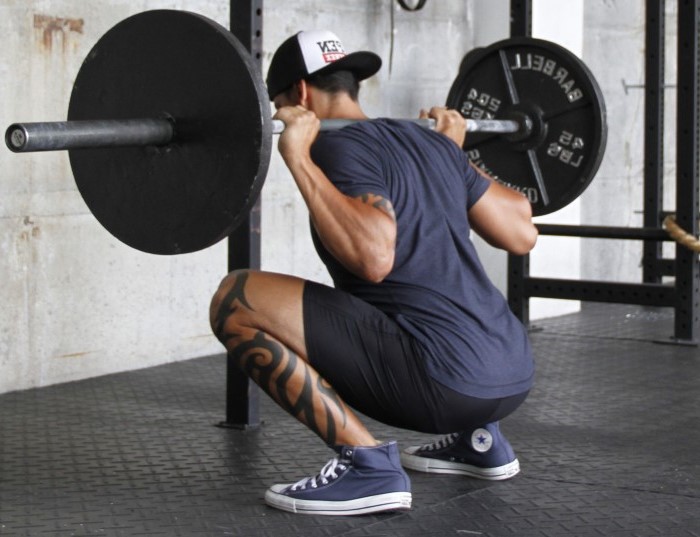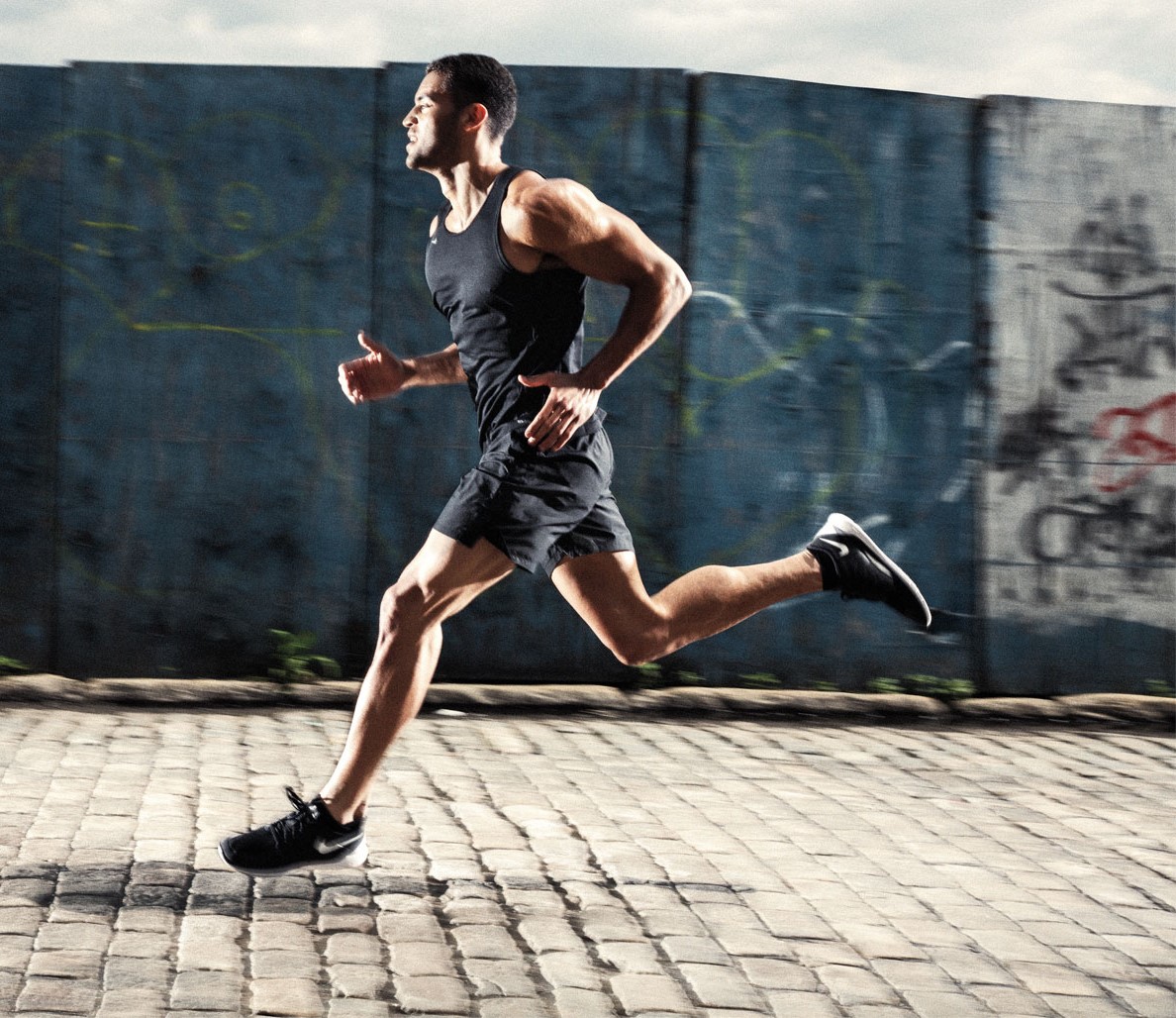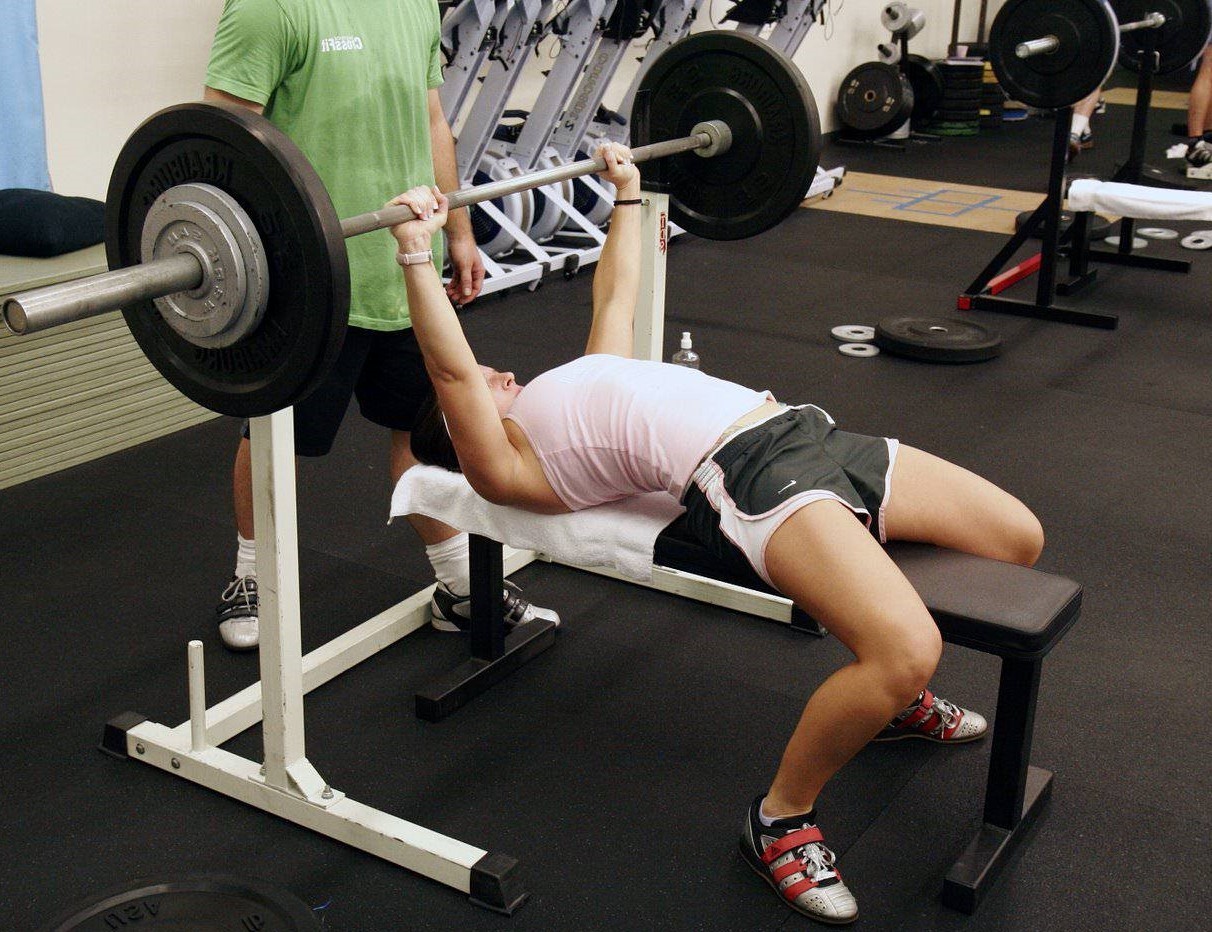Many people blame weak or tight hamstrings for squat issues, but this is rarely true. The squat, both as a resting position and as a dynamic movement, does not require a very flexible hamstring muscle. It does require adequate hip and ankle mobility, though – which often means doing a lot of mobility drills.
It’s also not a magical movement. Squatting for hours eventually leads to health problems, including a higher risk of degenerative disease in the bones and knees, and nerve damage from a pinched ulnar. That being said, the high incidence of sitting in the West has led to many children losing the ability to squat normally and comfortably. Should they, though?
The ‘Perfect’ Squat Doesn’t Exist
Humans should spend the most of their waking time standing or walking, but squatting is a superior resting position to sitting in a chair, provided you’re not squatting for long periods of time.
Just squatting more often will also improve your squat, the powerlifting movement. I’m in an awkward position where I have a hard time squatting without a counterweight. I have excellent hip mobility for the squat but struggle to maintain ankle dorsiflexion. Weight on my back helps me easily squat into an ass-to-grass position, without rounding my lower back. My ankles just need a bit of weight to get into that right dorsiflexion.
For years, I struggled. I did my darnest to get into the right position in the squat. I obsessed over every detail, cursed my stance, tried different prehab exercises, and gave up a few times along the way. I thought there was a single correct way of doing the squat – knees forward, toes forward, feet at shoulder width, ass to ankles – and everything else was poor form.
Other people have other problems. Flat feet spell doom for the squat, as does knee valgus and improper squat stance. I’ve had to work through such issues with friends in the past, and it seems like a lot of people absolutely suck at squatting when they first try it. Others, of course, are gifted with great flexibility despite years of sitting, and can squat without a problem.
If you can’t, chances are it’s:
- Your ankles
- Your feet
- Your hips
- Your back
Fixing your squat is a tall task, but there are a few things you should know about squatting before you lament about the death of your powerlifting career. Here’s the biggest piece of advice that made me realize I really shouldn’t worry so much:
Every Squat Looks Different
The basics of an IPF squat are that your hip joint hits a point just below being parallel to the knee joint. That’s “depth”. For obvious reasons, you’ll want to reach said point while keeping your foot flat on the ground, with a neutral spine, without your knees shooting out of their respective legs with a dangerous pop. In terms of the motion itself, you want a straight bar path – because the fastest way from point A to point B is a straight line, and a shaky bar path has you fight against gravity more than you should.
But that’s about it, really. The angle of your torso, the way your knees come out beyond your toes, the width of your stance – that’s all up to an individual.
Squats look different based on a person’s leverages, flexibility, and pelvic shape. Squat stance is mostly a matter of how a person’s femur sits in their hip socket, which is entirely genetic. How deep and how wide you can squat is limited to how your leg sits in your hips.
Anyone without a major injury or disability can squat to parallel, even if it takes some practice and stretching. But not everyone can hit rock bottom in a narrow stance, and you shouldn’t force it if you can’t. A trained physician can check your optimal squat stance by “scouring” along the outline of your hip with your leg, as demonstrated here:
Once you know how deep you can squat and what stance you squat with the best, it’s time to test what ultimately is limiting your ability to hit parallel. A healthy squat means being able to squat to depth with an empty bar without counterweight or an awkward spine.
Mobility Drills for Hip Tightness
The first of many mobility drills is a four-legged rocking motion. Get on your hands and knees, keep your back straight, and stimulate a squat with your hips – meaning, get your butt past your knees without your back collapsing into flexion.
If you can maintain a straight back while your hips extend past your knees in a quadpedal position, then your hamstrings aren’t an issue, and neither are your hips. Your issue is likely an ankle problem.
If you struggle with hitting depth on this stretch, then you have some work to do on your overall posterior chain. Here come the mobility drills. Start by taking stretching seriously, and work on opening up your hips and legs. Here are a number of excellent stretches that you should commit to at least thrice a week. Static stretching should be approached much like any other form of training – go for reps and sets, and alternate strenuous static stretches (with loaded resistance, in some cases) with light dynamic stretches.
Mobility Drills for Ankles
Ankle mobility is another issue. A lot of people have tight calves and terrible Achilles tendon flexibility, and the easiest way to tell that this is the case is through good ol’ yoga. The Downward Dog is the absolute most effective and grueling stretch for anyone with tight ankles, and it’s guaranteed to make you feel like someone is slowly but surely slicing into your leg. Work on keeping your legs completely locked out while maintaining a neutral or extended spine. In other words, ass up, head down, heels on the ground, and knees through. You can turn this into a thoracic mobility exercise by bending the knees and putting the focus on the spine – but because we’re talking about the ankles here, keep those knees locked out and unbent.
Wall Touches
Alongside this stretch, work on your wall touches. Just stand in front of a wall, with one leg forward, with your toes as far away from the wall as you can manage while still being able to touch your knee to the wall without your heel coming up. Don’t let your foot collapse inward and don’t let your knee go inward or outward.
Finally, once you reach a certain range of motion, it’s time to take a page out of the book of Olympic weightlifters and use this exercise:
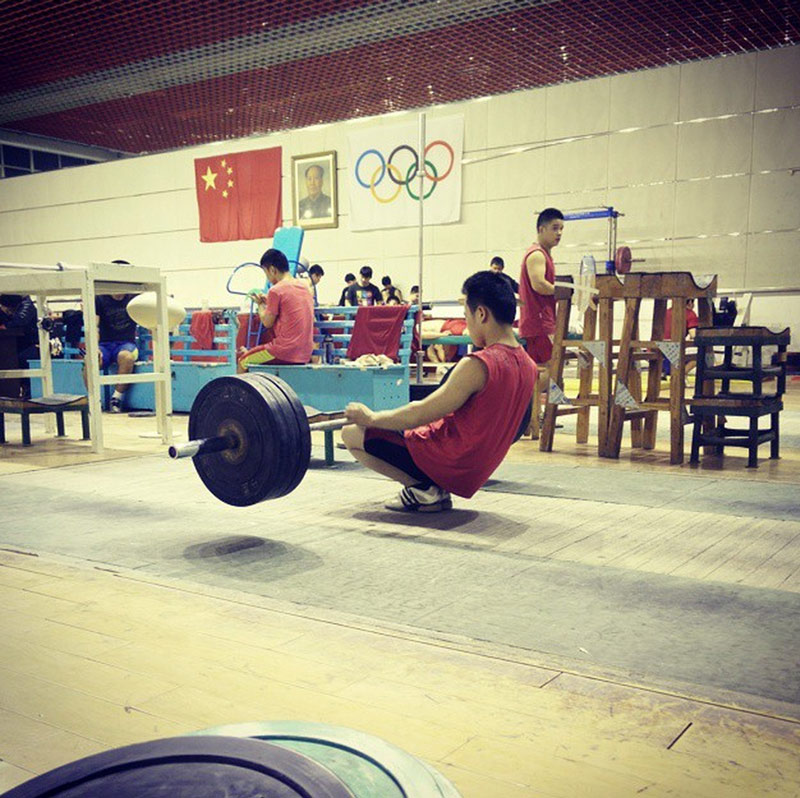
Flexible and strong calves are important for a steady and stable squat. That means working both the calves and the shins, stretching and foam rolling both. Where ankle dorsiflexion is all about getting the toes close to the shins, ankle plantar flexion is about going the exact opposite way, contracting the calf muscle while stretching out the shins. Tight shins can hamper your dorsiflexion and fuck with your squat. Tight calves and shins can also force your feet to contort or go flat-footed under heavy loads, which goes straight into your knees and feels like shit.
For ankle plantar flexion, start by leaning on a wall or squat rack and just doing ankle circles and shin stretches. After a squatting session, do calf raises and shin contractions (using bands).
Mobility Drills for the Upper Back
The back is the next issue with a lot of people. A weak upper back makes for a weak squat, and you can test this any time of the day by comparing your max squat with your max hip thrust or leg press.
Chances are you squat less than your legs can actually press, because your back can only handle so much weight. This is why people generally squat more in the low bar position, unless they’re elite weightlifters and have upper back muscles capable of catching bullets. Seriously, ever seen Lü Xiaojun?
Thankfully, this isn’t really a mobility issue and is usually fixed in novices by squatting more often, while intermediate lifters can refer to my other piece about building a better upper back for squatting. Other options include Cat and Cow, and foam rolling the back.
Mobility Drills for Flat Feet
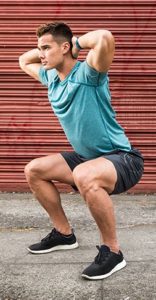 My last piece of advice is about feet. Feet in a squat must:
My last piece of advice is about feet. Feet in a squat must:
- Keep maximum pressure concentrated in the midfoot, meaning weight is equally distributed between the ball of the foot and the heel.
- Maintain equal pressure on three points: the heel, the point on the sole below the small toe, and the point on the sole below the big toe.
- Immediately, having a flat foot fucks you up in this case. Flat feet are caused by weak foot musculature and ankles that collapse inward, causing the plantar section of the foot to touch the ground when it shouldn’t.
When you’re stepping out of the shower, your footprint should look a little something like the two prints in the middle:
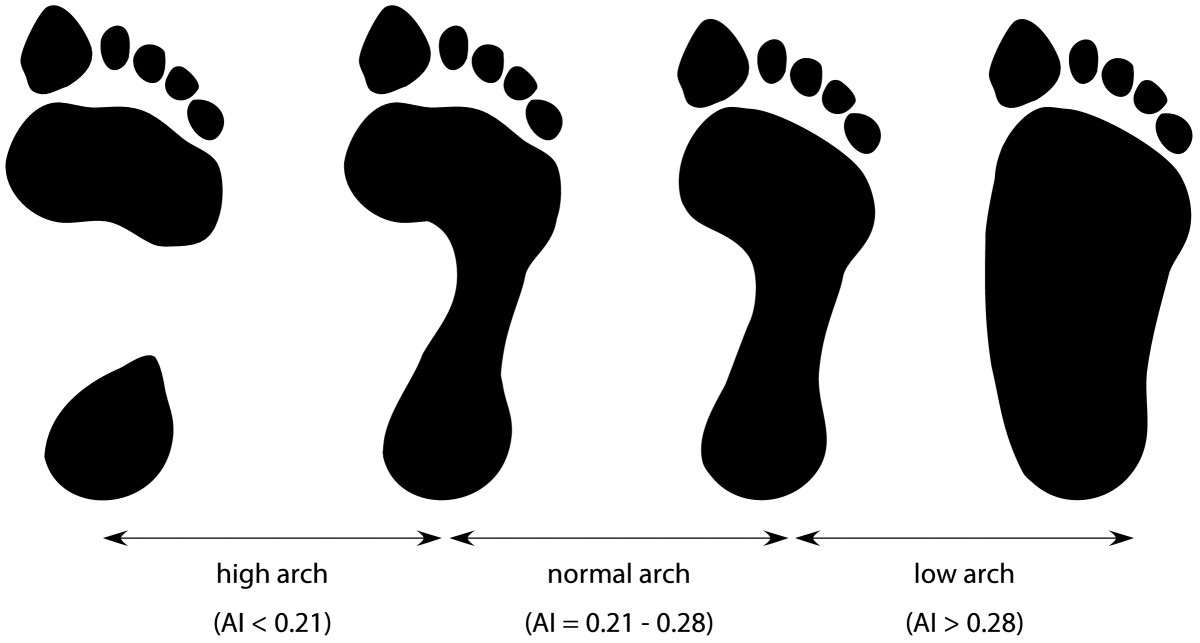
Your ankles while walking, running, and squatting should also look like the image in the middle, not the images on the left and right.
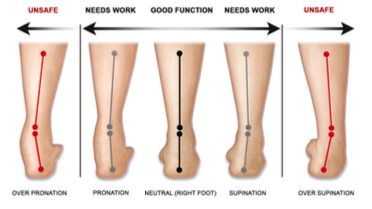
If you observe your feet collapsing inward while squatting despite having normal feet, you might be dealing with an ankle issue rather than a flat foot. In this case, widen your stance, work on your ankles, and screw your feet into the ground before you squat, much like you would in preparation for a sumo deadlift.
Pretend you’re standing on a large piece of paper and try to rip the paper in half by pushing your feet into the ground and spreading really hard, without actually moving your feet. This will also rotate your legs in their sockets and keep your knees in line with your toes.
If you do have flat feet, consult a doctor and get proper orthopedic insole for your shoes, and a list of corrective exercises that best apply for your degree of flat footedness.
Want to lift heavier and avoid injuries? 💪🔥
Download our FREE '5-Minute Warm-Up Routine for Maximum Lifting Performance' and get primed for every workout!
Click below to grab your copy now!👇
👉 Download the Free Guide
